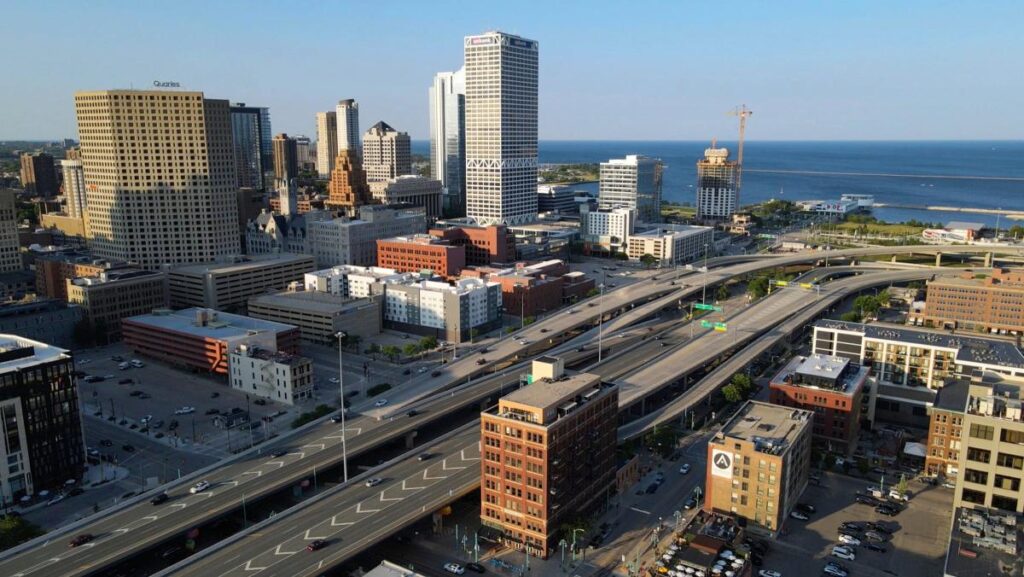A recent study from Rethink 794, a coalition of environmentalists and urban advocates, suggests that replacing part of downtown Milwaukee’s Interstate 794 with surface streets could lead to the construction of over 3,000 housing units and generate $535 million in property and sales taxes over a span of 30 years. The study, conducted by urban planner Larry Witzling, specifically examines the potential development opportunities created by the removal of I-794 between the Hoan Bridge and North Sixth Street. It also posits that additional parcels further west may become available for urban growth. This proposition comes at a time when the Wisconsin Department of Transportation (WisDOT) is contemplating options for I-794, including both repair and removal plans.
Witzling’s analysis estimates that constructing more than 3,000 housing units across 10 blocks would potentially create $475 million in property tax revenue, along with $60 million in city sales tax generated by new residents. Over the next 30 years, this influx of new residents would spur approximately $3 billion in disposable income, benefiting local businesses such as stores and restaurants. The study suggests a diverse mix of housing types, with 20% of the units designated as affordable, addressing growing concerns over housing accessibility in urban areas.
The study’s release coincides with WisDOT’s evaluation of seven conceptual plans to repair I-794 as well as two plans involving its removal. Decisions on the next steps are expected to materialize in 2025 or 2026, following additional public input and study of the options. Among the alternatives proposed includes restoring the freeway within its current alignment while maintaining all existing access ramps, along with a tighter alignment that consolidates some ramps. The potential redevelopments would fundamentally alter the existing landscape, offering new opportunities for urban revitalization.
Witzling, a seasoned urban planner and professor emeritus at the University of Wisconsin-Milwaukee, draws from historical slow-growth changes in downtown Milwaukee, notably projects like the Park East corridor. His involvement in the Park East redevelopment has provided him with insights into how freeway removal can lead to positive urban growth. Such a transformation could potentially accommodate the traffic currently managed by I-794 through alternatives like a four-lane, two-way Clybourn Boulevard, which would mitigate congestion while sustaining urban mobility.
However, not all stakeholders are in favor of removing the freeway. Some property owners and business operators express concern that replacing I-794 with surface streets could lead to increased traffic congestion, particularly in areas like the Historic Third Ward, which could undermine the vitality of local businesses. These apprehensions highlight the complexities involved in major urban planning decisions and the need for thoughtful engagement with various community stakeholders to address potential objections.
While the freeway sections up for consideration date back to 1974 and had previously undergone a significant renovation from 2013 to 2016, WisDOT does not plan to remove the Hoan Bridge during any reconstruction efforts. However, there are possibilities for redesigning the Clybourn Street Bridge to mitigate the frequent lifts that occur, especially during the summer tourism season. As public dialogue surrounding these urban development plans continues, the outcomes will ultimately shape Milwaukee’s future landscape and economic vitality.

